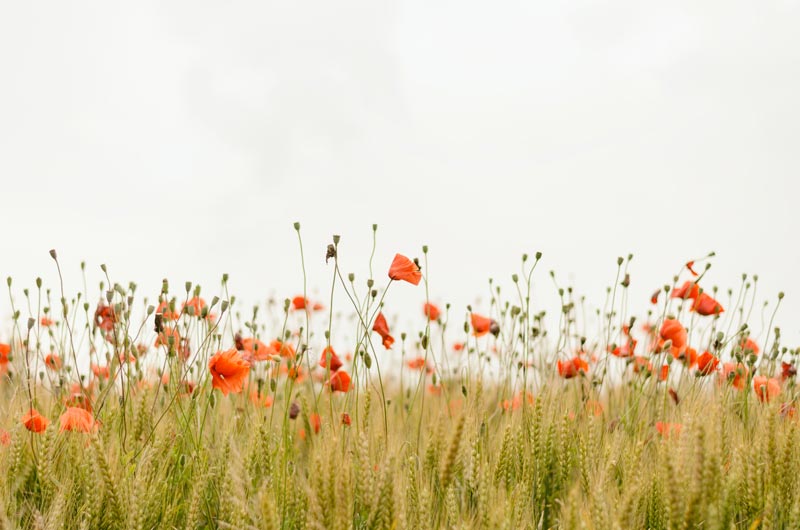FDIC-Insured - Backed by the full faith and credit of the U.S. Government
-
-
-
FNBO
MortgageMay 12 2020
-

Spreading Happiness. The Symbolic Significance of Flowers
As warm weather returns, you may be thinking about sprucing up your home, or possibly your yard. Fortunately, not every home improvement project needs to include major construction. Something as simple as planting flowers can add to the beauty of your surroundings and make a positive contribution to your neighborhood, too.
Did you know that flowers can impact our emotional health, trigger instantaneous, happy feelings and elevate our satisfaction with life? It’s true, and Rutgers University even did a little research to back-up their theory that nature helps us manage our mood.
Flowers, in particular, have a language of their own, which means you can express your thoughts and feelings through the blooms and bushes you plant. You just have to translate “flowerspeak,” so your blossoming beds will broadcast your intended meaning.
According to the Farmer’s Almanac, it goes back to the Victorian era when flowers were used to share silent messages. A suitor, for example, might send tulips to his beloved to quietly express his passion. The object of his affection would, in turn, respond with peonies to indicate her sense of bashfulness.
Understanding the language of florae is an opportunity to be intentional when you select and plant this spring. You will not only beautify your home, you will create a floral melody that sings out to those who stop to admire your garden.
Flower Species—What do they Say?
Wallflowers, with their promise of faithfulness in adversity, are a vibrant and colorful place to start. You might also consider planting yarrow which offer everlasting love, or zinnias to declare that you’re missing absent friends.
Some blooms boldly boast personality traits, like yellow jasmine which means grace and elegance or yellow tulips that reflect the sunshine in your smile. And if you want a variety full of bluster, sunflowers stand guard with an impressive display of pride and swagger.
For flowers that flirt with the forbidden, consider columbine which hints that foolishness is afoot or begonias that, according to legend, scream “beware dark thoughts.” Begonia with care! And, by all means, be thoughtful when planting tansy which translates to “immortal.” With their dense, yellow pompom foliage, tansy might even signal a declaration of war on your neighbors.
However, if spreading joy and creating harmony are the ultimate objectives (and aren’t we all in in that camp?!), you have many options. Pink roses telegraph happiness and admiration, sweet peas express appreciation for delicate pleasures, and larkspur offers up lightness and levity. Other friendly species include pansies with their power of love, truth seeking white chrysanthemums, and the ever popular violets which radiate loyalty and devotion.
Exploring the meaning behind flowering plants is an interesting approach to your spring garden selections, and a great way to spread loving and positive vibes to your neighbors and guests.
Flowers for Your Home, the Practical Side
While it’s fun to think about the hidden language behind flowers, when it comes to your garden-scape plans, also remember the practical considerations. Flowers that thrive in sun and dry soil probably won’t survive that shadowed, wet corner by your patio. Likewise, blooms that do best in cooler, shaded spots won’t enjoy the heat from daytime sun.
Soil is another factor. Many flower varieties do best in dry sandy soils, while others blossom more fervently in a fertile well-drained space. If the ground where you’re planting isn’t suitable for the flowering plants on which you have your heart set, consider enriching it, or choose different plants.
Adding organic matter, such as well-rotted manure or compost for example, can revive sandy soil, bringing back the nutrients your flowers will need. Likewise, adding organic matter to clay soils can improve drainability.
Lastly, don’t forget to cover the soil. A healthy layer of wood mulch or peat moss can preserve moisture as well as the plant’s roots, and make them much more tolerant to the hottest hours of the day.
Beyond soil health, think of yourself and what you enjoy most about flowers. If you plan to bring some of that external happiness inside with a freshly-cut bouquet, consider planting flowers with long stems that will easily fit into a vase and combinations that add color, texture and height. Also remember, there are many fantastic flowering shrubs. Varieties such as lilacs and hydrangeas make fragrant and bountiful bouquets that can uplift your interior spaces as well as those outdoors.
Many perennials flowers bloom only for a limited time. Candytuft and phlox, for example, flower in early spring. Peonies, coneflowers and lilies pick up where they leave off, opening petals later in the season. The key to providing a long-lasting display of vibrant color is to mix different varieties in your flower beds, paying attention to the bloom schedules of each.
Of course, annuals can always be added to perennial beds to ensure continuous bright spots in your garden as perennials run their course. While annuals may last only a single season, they’ll provide an enduring show of blooms until fall comes around to bid them farewell.
Paying attention to these basic tips will help you get started, and once you grow fluent in the language of your garden, you can mix in hidden messages and express your inner-most thoughts for a showy display of color and confidence all season long.
The articles in this blog are for informational purposes only and not intended to provide specific advice or recommendations. When making decisions about your financial situation, consult a financial professional for advice. Articles are not regularly updated, and information may become outdated.